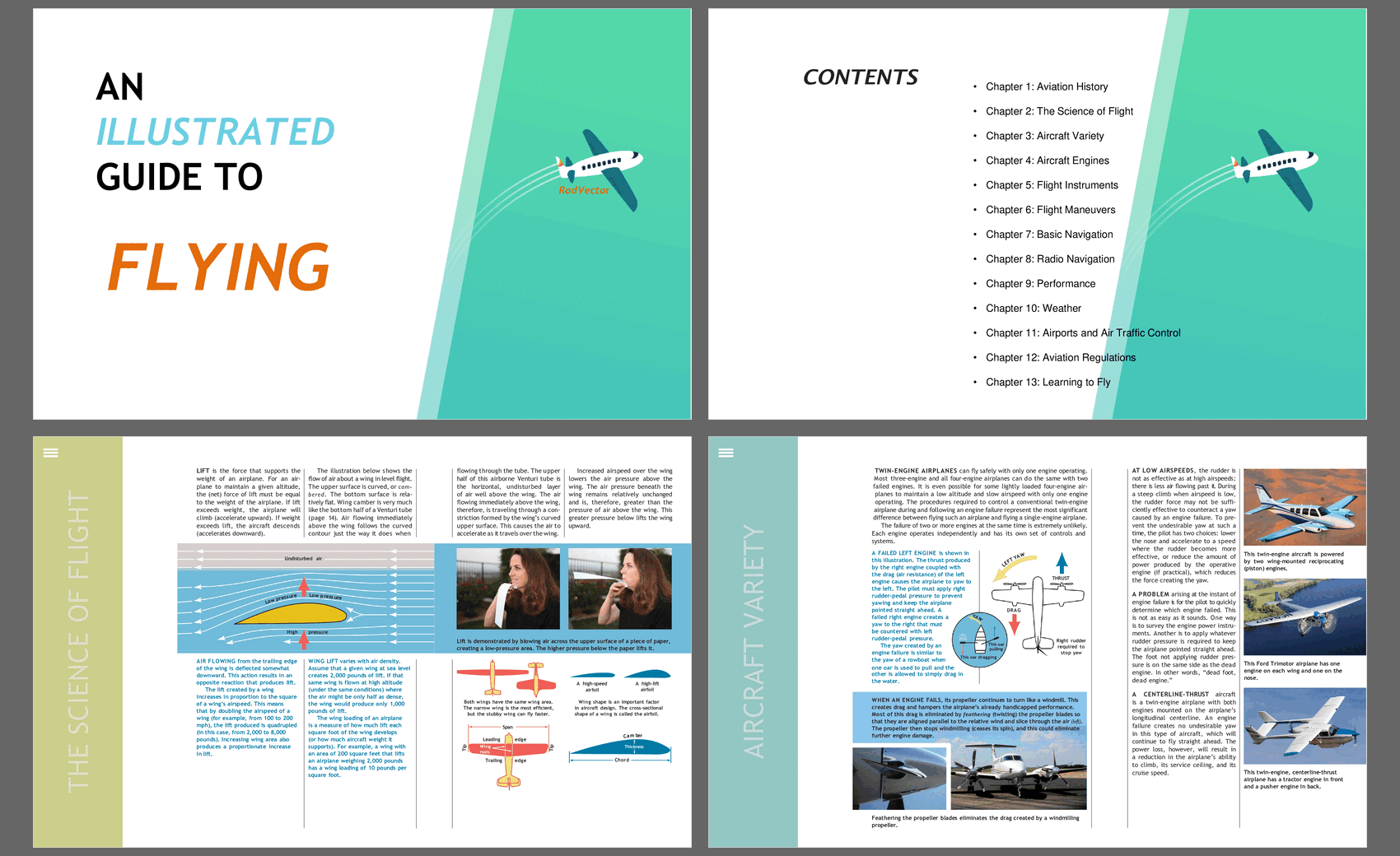Illustrated Guide to Flying (PDF)
PDF document 106 Pages
AIRLINE INDUSTRY PDF DESCRIPTION
An Illustrated Guide to Flying
This PDF presentation offers a comprehensive journey through the fascinating world of aviation – from its earliest beginnings to the modern technologies that keep aircraft safely in the sky. Divided into thirteen interconnected chapters, it provides both a historical and technical understanding of flight, making it ideal for students, enthusiasts, or anyone aspiring to become a pilot.
Chapter 1: Aviation History introduces the pioneers who turned humanity's dream of flight into reality. From the Wright brothers' first powered flight to the jet age and the rise of commercial aviation, this chapter traces how innovation, war, and ambition shaped the evolution of flight.
Chapter 2: The Science of Flight explains the physics that make flying possible. Concepts such as lift, drag, thrust, and weight are explored, helping readers understand how aerodynamic forces interact to keep an aircraft airborne.
In Chapter 3: Aircraft Variety, we explore the diversity of aircraft – from light training planes and helicopters to commercial jets and military fighters. This chapter emphasizes how design serves purpose, performance, and mission.
Chapter 4: Aircraft Engines delves into the power sources of flight, including piston engines, turboprops, and jet turbines, explaining how each converts energy into thrust.
Chapter 5: Flight Instruments covers essential cockpit tools like the altimeter, airspeed indicator, and attitude indicator, which help pilots maintain control and situational awareness.
Chapter 6: Flight Maneuvers focuses on basic and advanced movements – climbs, turns, descents, stalls – that form the foundation of pilot training.
The navigation-focused chapters begin with Chapter 7: Basic Navigation, which introduces maps, headings, and visual references, followed by Chapter 8: Radio Navigation, explaining modern systems like VOR, GPS, and ILS that guide aircraft safely even in poor visibility.
Chapter 9: Performance discusses how factors like weight, altitude, and weather affect an aircraft's efficiency and capabilities, while Chapter 10: Weather examines meteorological conditions crucial to flight safety.
Chapter 11: Airports and Air Traffic Control explores how ground operations and communication ensure smooth and safe air traffic management.
Chapter 12: Aviation Regulations presents the international and national laws that govern aviation standards, pilot licensing, and aircraft certification.
Finally, Chapter 13: Learning to Fly brings all these concepts together, offering a roadmap for aspiring pilots – from ground school theory to solo flight and beyond.
This PDF presentation aims to inspire understanding, respect, and passion for the science and art of aviation.
Got a question about the product? Email us at support@flevy.com or ask the author directly by using the "Ask the Author a Question" form. If you cannot view the preview above this document description, go here to view the large preview instead.
Source: Best Practices in Airline Industry PDF: Illustrated Guide to Flying PDF (PDF) Document, RadVector Consulting









